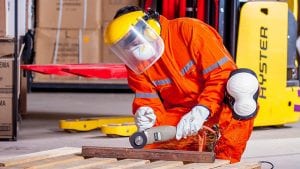
What is likely to change for manufacturers, and what can they do about it? One thing is for sure; the winners will be those that maximise the benefits from how their people and technology interact.
A recent report by McKinsey called out four forces that are shaping the next normal:
- Metamorphosis of demand: Lower consumption levels and a shift to online sales.
- An altered workforce: Employees will demand increased flexibility and remote working, especially for office jobs.
- Regulatory uncertainty: National economies are the primary concern for many governments; this may impact trade and compliance across different industries.
- Understanding of the Virus: There is already a variety of social distancing recommendations. Much is still not known about the virus or even if there will be a vaccine.
While the shift to online has enabled globalisation of many services, protectionism and reshoring are also appearing. Japan, Australia and the US have already introduced stimulus packages to bring manufacturing back inside national borders from China. The economic benefits of completing this change are difficult to calculate with any accuracy. Are those benefits economically sustainable in the long term, with labour cost differentials still existing in the tiger economies?
McKinsey also calls out that organisations will have to move from evidence-based decision making to hypothesis based decision making. Evidence-based decisions are still critical, but with so many paths forward, companies will need to achieve a higher level of agility.
Social distancing, though it varies by country and even within each country, will change how people work, possibly forever. Some of these changes are beneficial to employees work-life balance. For example, for those workers that can work from home, the additional personal time gained is significant in some cases.
Manufacturing has changed
Unlike several other industries, some manufacturers are already back at work and learning to cope with the new normal. It includes medical device manufacturers and others involved in healthcare. These manufacturers are already overcoming challenges emerging because of the pandemic. The challenges are both within and outside the organisation. They include changes that impact people and process, and companies are increasingly turning to technological solutions to solve many of them.
People
Manufacturers need to ensure that the return to work is in a safe and compliant workplace. More office workers will work from home. That entails more equipment at those homes. Organisations will need to ensure that the processes are in place to monitor, secure and manage that equipment effectively. IT teams need to re-align to support these changes. There is a blurring of lines between business equipment and BYOD. Both need managing effectively, from a security perspective at least.
Additionally, organisations may need to introduce technology such as touchless entry systems with biometric systems and temperature testing functionality. Offices will also require reconfiguration and regular cleaning for the new normal. Cloud-based technology enables people to work anywhere, at any time. With lockdowns continuing intermittently, it allows people to continue working.
On the shop floor, production lines will need changing to ensure social distancing guidelines can be adhered too. With less human oversight, the importance of IoT feeding data to Enterprise Asset Management systems becomes even more critical.
There is also the challenge of resource management. In China, manufacturers faced with social distancing demand are introducing multiple shifts to keep daily production levels at a similar level to densely populated factory floors. This increases the importance of predictive maintenance, something that Enterprise Asset Management can solve. It also increases cross-training requirements for employees as key workers cannot work more than a single shift. Learning Management Systems may provide an answer.
Outside the organisation, buying habits have changed. Manufacturers need to evolve new routes to market. If retail is in decline, eCommerce is now a crucial channel. Another McKinsey report highlighted that fashion brands that are weathering the pandemic better are already on a digital journey, and they are leveraging eCommerce to achieve this.
Another consideration is servitisation, where manufacturers offer sell outcomes as a service rather than a physical product and layer traditional services on top, for example, paying for the number of units produced by a machine rather than the machine itself. If lower consumption becomes the norm, Manufacturers will need to consider additional services they can adopt as they seek to recover to pre-pandemic revenue levels.
Process
Processes, both internal and external to the organisation, are evolving. Human Capital Management (HCM) practices need greater efficiency. They certainly need to become digitalised with a dispersed workforce. Manufacturers can no longer rely on high touch paper-based systems.
Perhaps the most significant impact from COVID-19 has been on the supply chain. COVID-19 introduces even more uncertainty into international supply chains. Manufacturers will need to improve the visibility of where goods are. They will need fully integrated processes around planning, reporting, buying, stocking and prioritisation. The answer is not a single monolithic ERP solution but an integrated hybrid architecture that reduces errors, duplication and increases efficiency.
Supply Chains are likely to become broader, more dynamic and more complex. The regulatory landscape is likely to change, and only cloud-based systems can deliver the flexibility required. Those systems also need to extend the visibility of information into the suppliers themselves. Manufacturers will need to introduce supply chain technologies that can cope with current and future changes.
Is technology the answer
The likely outcome is that manufacturers will have a greater reliance on cloud-based technology. It is not just about software such as Enterprise Resource Management, Enterprise Asset Management, Workforce Management and eCommerce solutions. Manufacturers will need to reconsider Robotics and Cobotics (a collaborative partnership between a human and a robot) on the shop floor. IoT can also help drive both efficiencies within an EAM solution, and future revenues.
As manufacturers begin to collect and own more data, they will need to consider the application of AI and Machine learning on these new data sets. The winners will be those that move quickly to embrace the right technologies at the right time.
As John Boyd believed: “The key to victory is to be able to make appropriate decisions faster than the rate at which the environment evolves.”
Enterprise Times has created a survey executed by SG Analytics which ask a series of questions that looks at how Manufacturers are looking to transition to cloud technology. The survey is open to European respondents in managerial 
This Blog was commissioned by Infor
Infor is a global leader in business cloud software specialized by industry. With 17,300 employees and over 68,000 customers in more than 170 countries, Infor software is designed for progress. To learn more, please visit https://www.infor.com/en-gb
Infor customers include:
- The top 20 aerospace companies
- 9 of the top 10 high tech companies
- 14 of the 25 largest U.S. healthcare delivery networks
- 19 of the 20 largest U.S. cities
- 18 of the top 20 automotive suppliers
- 14 of the top 20 industrial distributors
- 13 of the top 20 global retailers
- 4 of the 5 top brewers
- 17 of the top 20 global banks
- 9 of the 10 largest global hotel brands
- 7 of the top 10 global luxury brands



























